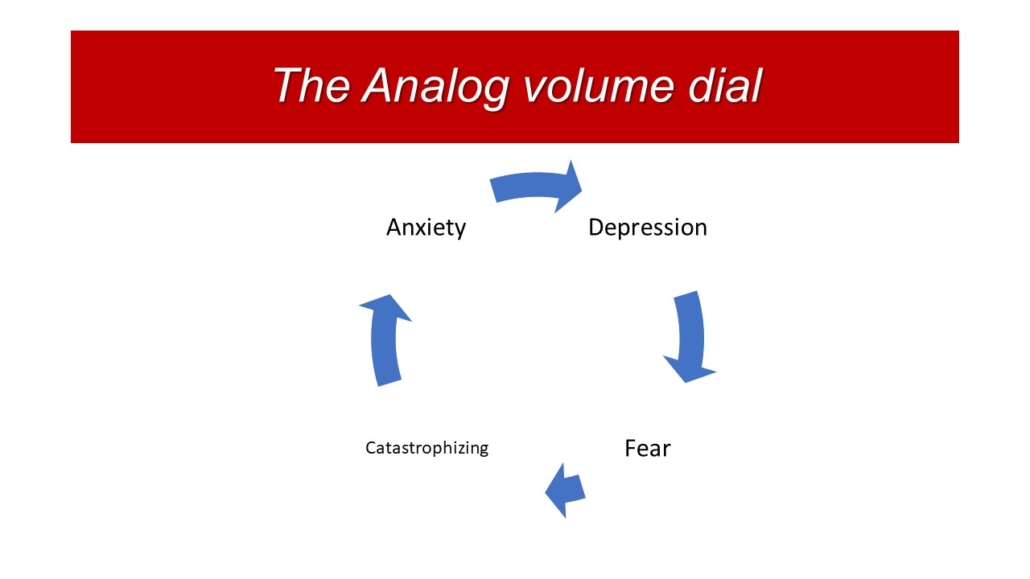Three simple steps to reduce patient stress during treatment
What tools do you provide your patients to manage stress, whether it’s caused by their injuries or psychological factors?
Have you ever wondered whether you could do more with patients who are lying on a heat pack (or other modality) at the start or finish of treatment?
⇒ Can we do more in 15 minutes?
I wonder if we can use such chances to teach patients about pain. Patient education aids healing, according to ongoing study. How frequently do we teach patients to handle pain differently and provide them the tools to do so? I present 3 basic methods to assist you use mindfulness-based meditation training in the clinic to help patients reduce their discomfort.
⇒ Pain Stresses
Pain confuses us. When a chronic condition flares up and motivation wanes, it’s hard to keep perspective. When our reasoning is muddled, emotions may “up-regulate” our nervous system and slow our body’s repair.
We must teach our patients how to de-stress and change their body-mind interaction to “down-regulate” their nervous system. That seems hard, but there’s a simple method to achieve it. Mindfulness meditation.
Mindfulness meditation involves being “highly aware and focused on the reality of the present moment, accepting and acknowledging it, without getting caught up in thoughts that are about the situation or in emotional reactions to the situation.” 1
Different mindfulness meditations exist. Jon Kabat-Zinn’s Body Scan meditation is widely practiced.
⇒ How to Perform Body Scan Meditations in a Clinical Setting in Three Easy Steps
I suggest following these 3 steps to implement patient body scan meditations in your healthcare setting:
A good mindfulness meditation recording is the first step.
The first mindfulness meditation tapes, developed via mindfulness-based stress reduction (MBSR) training, lasted for around 45 minutes. Although such meditations are excellent, they are lengthy and impractical for use in a therapeutic setting. After experimenting with a variety of meditation techniques, I’ve chosen one that is just 20 minutes long and relaxing to listen to. At UC San Diego, it was created.
The body scan meditation may be accessed by clicking this link.
Step 2: Pull out your iPod and make a playlist for meditation.
Creating a new podcast playlist for the clinic is as easy as getting an iPod or other media player, downloading the MP3, and doing so. To increase patient comfort, I’d advise investing in headphones that are simple to put on and take off. Of course, we need a method for the patient to block out the unnecessary noise without disturbing the other patients. The patient should ideally be in a secluded room, but simply covering their eyes with a folded towel can assist to reduce unwanted sensory inputs. Use of headphone coverings will assist to promote proper hygiene. They are reasonably priced and available on Amazon.
Step 3 : Inform the patient
Patients who lack knowledge of the pain sciences may sometimes distrust the “meditation” method. In the clinical setting, I’ve found it useful to close that gap by describing how mindfulness meditation might be beneficial and utilizing some simple metaphors for pain education. As explained by Melzack 2
Because we are so used to thinking of pain as a simply sensory experience, we have overlooked the apparent reality that damage not only causes pain but also disturbs the brain’s mechanisms for maintaining homeostasis, which results in “stress” and starts a complicated process to restore balance. We learn that the breadth of the jigsaw of pain is greatly broadened by acknowledging the involvement of the stress system in pain processes, and new pieces of the puzzle provide important hints in our search to comprehend chronic pain.
Because we are so used to thinking of pain as a simply sensory experience, we have overlooked the apparent reality that damage not only causes pain but also disturbs the brain’s mechanisms for maintaining homeostasis, which results in “stress” and starts a complicated process to restore balance. By identifying the function of the stress system in pain processes, we learn that the jigsaw of pain has a much larger scope and that new parts of the puzzle provide important hints in our search to comprehend chronic pain.
And helping our patients realize that pain is more than simply a sensory experience and that it really represents a much larger problem that needs to be investigated and solved is part of our job with them.
One of the early analogies I often use is that of a stereo’s volume dial. The volume dial goes up, our pain experience is more intense, and it becomes more fundamental to our reality when we are in pain and experiencing the variety of other emotions that may often go along with injury and incapacity.
The Body Scan, a particular mindfulness meditation technique, aids in the development of our mind’s capacity to mentally separate ourselves from our suffering, lowering the volume and “down-regulating” our stress reaction. I explain to the patient that this simple breathing and awareness practice may assist to lower that dial and enable their body to achieve their maximum capacity for healing.

Three simple steps to start interacting with and teaching our patients about a certain skill set to aid in stress reduction and therefore improve their bodies’ intrinsic healing mechanisms.
Reference
- Bishop, S. What Do We Really Know About Mindfulness-Based Stress Reduction?. Psychosomatic Medicine 64.71-84 (2002)
- Melzack, R. Pain and the Neuromatrix in the Brain. Journal of Dental Education. Vol 65, 12. December 2001, 1378-1382.



